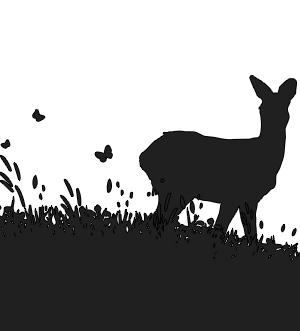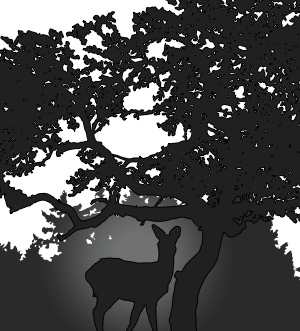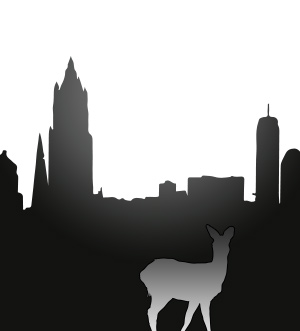
Aim
The aim of this guide is to introduce the complex relationship between deer and people that occurs in and around towns and cities.
Background
Some of Scotland’s 4 deer species are expanding in both their numbers and their distribution. In particular roe deer are adapting to new habitats and environments and are now common place in close proximity to Scotland’s human population. This is largely due to:
- Habitat creation ranging from large afforestation schemes to small community woodlands
- Government targets to expand woodland cover (eg. Central Scotland Green Network)
- An ability of roe to adapt into new habitats within the urban fringe where they were once resident, were displaced and are now subsequently re-colonising.
Opportunities
- Increased biodiversity – Deer, as one of our largest mammals, may be seen as a measure of success for urban, green belt, regeneration.
- Importance for environmental education programmes.
- Opportunity for people to see deer in their “back yard”.
- Promotion of a healthier lifestyle - encouraging people to get out and see nature.
- Opportunity to explain traditional deer management to a wider audience.
- Provide legally obtained, locally sourced venison as a valuable food source.
Challenges
- Public safety issues – Deer vehicle collisions (DVCs) 8,000–10,000 annually across Scotland with 65 of these causing serious human injury.
- Public perception of need to manage deer, legitimate firearms use and public safety.
- Recognising different viewpoints.
- Deer impacts to woodlands involving both commercial and community interests.
- Damage to property, gardens, golf courses, cemeteries.
- Deer Welfare problems – DVCs, entanglement in wire fences, choking on plastic bags and other toxic materials, dog attacks, poaching, wounding by air rifles, cross bows, snaring & trapping.
- Perceptions over human and animal health risks (eg. Lyme disease and tuberculosis (TB))
- Challenges in managing deer to deliver:
- sporting opportunities
- community benefits
- wildlife tourism
- source of quality food.
The Code of Practice on Deer Management (Deer Code)
If you own or manage land where wild deer are found, or manage deer on someone else’s land, the Deer Code applies to you.
How you apply the Deer Code is affected by a range of factors which will help determine:
- which deer management actions are relevant to you
- the extent to which the Deer Code will influence your management decisions.
Compare yourself to the following 3 scenarios and establish which route you should follow.

Scenario A – Small private garden < 0.5Ha deer hops fence and happens to be in there No action required, deer are likely to leave of their own accord.

Scenario B – Larger scale private land area < 10 Ha, deer present in area regularly utilising it for shelter and food. Increased likelihood of responsibility over deer consider your situation re the Deer Code.

Scenario C – Large land area 10 – 10000 Ha, eg Local Authority owned, deer present on land all year. As an owner / manager of this land the Deer Code applies to you
In order to be clear how much the Deer Code might guide your activities you should consider the following sorts of questions

A summary of the deer management planning process under CPDM
The plan will be as detailed or as simple as the complexity of the deer management issues. see below
1 Recognise
2 Engage
3 Identify
4 Set targets
5 Identify
6 Monitor
7 Review
8 Acknowledge
CPDM promotes the management of wild deer in a sustainable manner.
